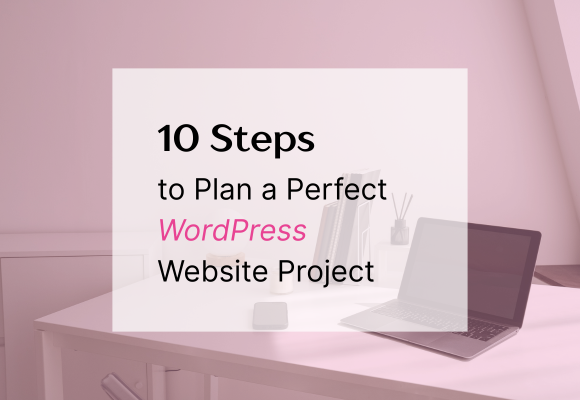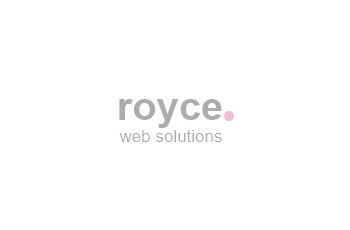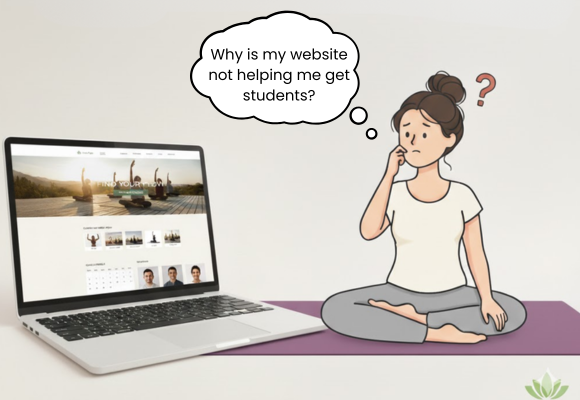10 Steps to Plan a Perfect WordPress Website Project

Though it started as a blogging tool, WordPress has undergone significant evolution and grown into a powerful website builder and the most popular CMS in the world.
As of the time of writing, WordPress already powers 43.4% of all websites as their CMS. Facebook, Microsoft, NASA, Sony, CNN, and Samsung are just a few among the notable big-name brands that are using WordPress.If you want to master the art of creating a WordPress website, you are in the right place!
This article will guide you through the ins and outs of creating a WordPress website from scratch while answering all the questions you may have along the way.One common question that often pops into the minds of users who might be considering setting up a website or planning to switch from another platform is: Why should we use WordPress?
Let’s clear that out first.
Why Do Professionals Prefer Websites on WordPress?
It is Easy to Use
WordPress, by default, is easy to install. No matter if you are 100% new to website development, web hosting, or blogging, with this CMS, you can publish a website within minutes. The process is straightforward and usually requires just a few clicks.
The admin dashboard is also clean and well-organized. This allows users to manage content, settings, and features without any technical knowledge.
Cost-Effective
As WordPress is an open-source platform, it allows users to download, install, and modify it without any cost. This eventually reduces the initial investment required for website creation.
Also, WordPress offers a bunch of free themes and plugins alongside premium themes and plugins. This allows users to add functionalities at no additional cost.
Intuitive User Interface
Simply put, WordPress simplifies the process of adding, editing, and managing content. Also, with WordPress, customizing the appearance and functionality of a website becomes straightforward. The customizer tool allows users to make real-time changes to menus, themes, and widgets.
You Get Endless Theme and Plugin Options
WordPress comes with a vast library of free and paid themes to choose from. These allow users to select a design according to their brand and objectives. Also, it offers around 60,000 plugins, both free and paid.
Whatever feature you need to bring more functionality to your site, there will be a plugin for it. Whether you need SEO tools, contact forms, eCommerce capabilities, social media integration, or security enhancements, there is likely a plugin available to meet your needs.
Secure and Safe
WordPress regularly releases updates to address security vulnerabilities and improve functionality. Security plugins available for WordPress provide features like malware scanning, login security, and firewall protection to safeguard websites from threats and attacks.
Steps to Plan Your WordPress Website
First, Buy a Domain Name
A domain name is the unique address where users can access your website. Hence, it is important to find a good one. Professionals advise you to go for short, snappy, and easy-to-remember names that are relevant to your site’s purpose.
Preferably, choose the .com extension instead of others like .net, .org, or .co, as it is the most recognized and trusted. Always do a quick check to find out whether any other businesses exist for any of the names you have shortlisted.
Get an SSL Certificate
An SSL certificate is a digital certificate that keeps user data secure while verifying ownership of the website and conveying trust to users. This ensures that any information exchanged, be it personal data, login credentials, or payment information, is secure and protected.
When your website has an SSL certificate, the URL will start with https:// instead of http://. The padlock icon conveys the message that the user’s connection is encrypted and cannot be read by others.
Determine Your Hosting Environment
The hosting environment is the server infrastructure that will impact your site’s performance, security, and reliability. When choosing a hosting provider, look for one that ensures fast server response times and CDN services to improve loading times. Opt for providers that have robust security measures and excellent customer support.
Decide on the type of hosting as well. Suppose you are looking for an affordable, easy-to-set-up option suitable for a small website; go for shared hosting. But if you want more resources and control than shared hosting, choose VPS hosting.
Map Out Your Site’s Structure
First, plan out the key pages your site needs. For example, your Home Page should highlight the most important aspects of your business, while the About Page should include your mission, history, team members, and other relevant details.
You must create a sitemap for a visual representation of your website’s structure that shows the hierarchy of your site pages. Use a user-friendly menu and internal linking structure. Also, ensure the use of consistent design elements, including colors, fonts, and styles.
Install WordPress and Select a Theme
WordPress themes allow you to customize the look and feel of your site. Also, themes that include built-in features and functionalities can boost your site’s capabilities. That is why selecting the right theme is important. Once you log into your hosting account, locate the WordPress installer to complete the installation.
Then, access the WordPress dashboard and log into your admin panel. Navigate through the themes and add a new one by browsing through the free themes or uploading a theme you have purchased.
Install Essential Plugins
Plugins are tools that boost the functionality of your WordPress site by allowing you to add specific features beyond what comes with the default WordPress installation. From SEO plugins to performance plugins to security plugins to backup plugins, you can add various functional plugins.
Once you install the needed plugins, configure them as per your needs, and make sure to keep them updated to their latest versions for better performance and security. Also, deactivate or delete the ones that are of no use.
Plan for Security and Backup
To protect your WordPress website from threats, plan for security and backup so that you can recover quickly in case of data loss. Encourage users, including yourself, to use complex passwords with a mix of uppercase, lowercase, numbers, and special characters.
Ensure regular updates of WordPress core, themes, and plugins to protect against vulnerabilities. Have an emergency plan for quickly restoring your site from backups in case of a security breach or failure. Choose a reliable storage location for backups, including cloud storage services.
Develop a Maintenance Plan
A maintenance plan involves ongoing tasks and routines to keep a website running smoothly. Regularly check the speed and responsiveness of your website and periodically update content. Automate where possible by using tools and plugins.
Use tools like Google PageSpeed Insightsto regularly test and analyze your site’s speed and performance.
Start Creating Content
Understand your target audience to create valuable content. Research relevant topics, write clear and engaging articles, and add high-quality images, infographics, and videos.
Finally, Publish!
Once you are ready, launch your website officially. Test all links, ensure all pages are public, and promote your site through social media, SEO, email marketing, and paid advertising.
Final Thoughts
Building a WordPress website doesn’t have to be complicated. With the right planning, tools, and strategies, you can create a professional, secure, and high-performing site that meets your goals. Follow these steps, stay updated with best practices, and continuously improve your site for the best results.
Ready to build your perfect WordPress website? Start today and take your online presence to the next level!
You may also like
- 01
Hidden Website Issues Yoga Teachers Overlook: With Simple Ways to Fix Them
- 02
Does a Landing Page Need a Domain?
- 03
How to Create a Free Website?
- 04
Coach & Consultant Websites: Build Credibility Online Without the Tech Overwhelm
- 05
No-Fuss Small Business Websites: Get Online Fast and Start Growing




